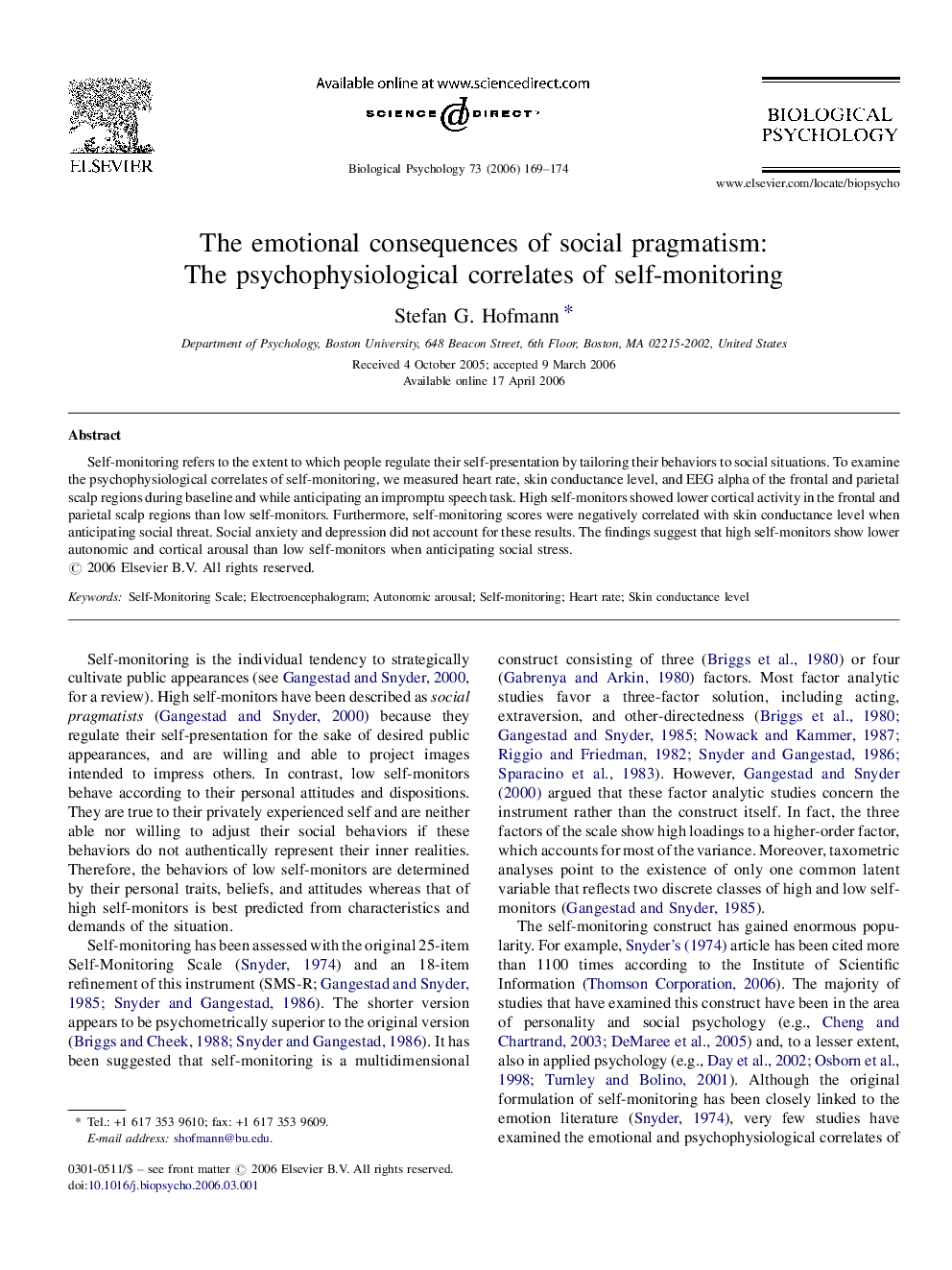| کد مقاله | کد نشریه | سال انتشار | مقاله انگلیسی | نسخه تمام متن |
|---|---|---|---|---|
| 921768 | 920801 | 2006 | 6 صفحه PDF | دانلود رایگان |

Self-monitoring refers to the extent to which people regulate their self-presentation by tailoring their behaviors to social situations. To examine the psychophysiological correlates of self-monitoring, we measured heart rate, skin conductance level, and EEG alpha of the frontal and parietal scalp regions during baseline and while anticipating an impromptu speech task. High self-monitors showed lower cortical activity in the frontal and parietal scalp regions than low self-monitors. Furthermore, self-monitoring scores were negatively correlated with skin conductance level when anticipating social threat. Social anxiety and depression did not account for these results. The findings suggest that high self-monitors show lower autonomic and cortical arousal than low self-monitors when anticipating social stress.
Journal: Biological Psychology - Volume 73, Issue 2, August 2006, Pages 169–174